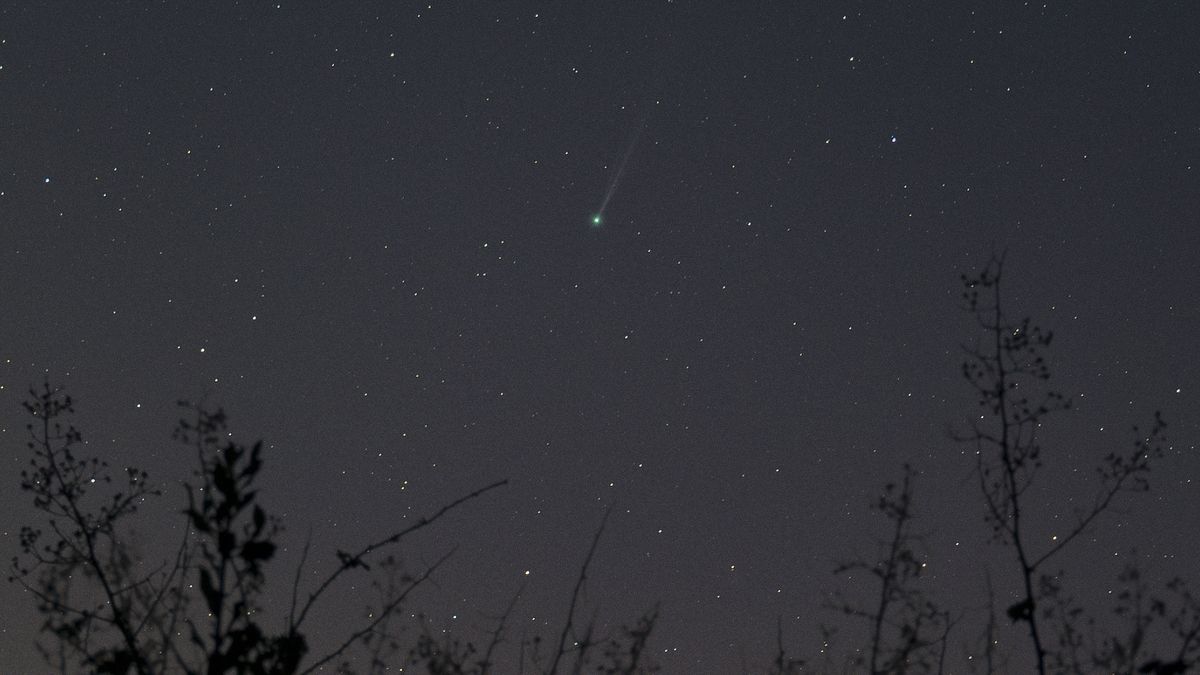Arson Suspected in Wildfires Ravaging Irish National Parks: Echoes of Risk in U.S.Wilderness
Table of Contents
- 1. Arson Suspected in Wildfires Ravaging Irish National Parks: Echoes of Risk in U.S.Wilderness
- 2. Devastation in Wild Nephin National Park
- 3. The U.S. Wildfire Crisis: A Constant Threat
- 4. Echoes of Recklessness: Intentional fires and Their Consequences
- 5. Preventative Measures and Community Engagement
- 6. Moving Forward: Lessons Learned and Future Strategies
- 7. What are your thoughts on the most effective ways to prevent wildfires in your community?
- 8. Interview: Addressing Wildfire Threats in a Changing World
- 9. Understanding the Irish Wildfires and Their Parallels
- 10. The American Wildfire Challenge: A Deep Dive
- 11. Prevention, preparedness, and Community Engagement
- 12. The Role of Climate Change and Future Strategies
- 13. Looking Ahead: global Lessons and Collaborative Solutions
Echoes of risk in U.S. wilderness. Authorities suspect arson in the recent blazes that decimated parts of Wild Nephin National Park in ireland, prompting urgent investigations and drawing parallels to the ever-present wildfire threat in America’s own treasured landscapes.
published:
Devastation in Wild Nephin National Park
Gardaí (Irish police) and the National Parks and Wildlife Service (NPWS) are currently investigating the origins of several fires that inflicted severe damage on Wild Nephin National park in County Mayo over the weekend. The fires, suspected to be acts of arson, have ignited concerns about the vulnerability of protected natural areas, a sentiment that resonates deeply within the United States, where wildfires pose a significant and increasing threat.
The NPWS confirmed that the Claggan Boardwalk,a popular 2km trail that has drawn thousands of visitors since its opening in 2017,was destroyed by a fire that appears to have been deliberately set on Friday night. The boardwalk, designed to allow visitors to experience the wild environment with minimal impact, is now closed indefinitely.
“wildlife may die from heat and smoke, habitats and food sources might potentially be destroyed and vegetation severely impacted. The impact can be irreparable and have long term negative consequences,” said Minister of state for Nature Christopher O’Sullivan, highlighting the devastating impact of such blazes.
“wildlife may die from heat and smoke, habitats and food sources may be destroyed and vegetation severely impacted. The impact can be irreparable and have long term negative consequences,”
Christopher O’Sullivan, Minister of State for Nature
A separate fire also broke out in the forest at Letterkeen early Monday morning, leading to the evacuation of several campers. The coordinated nature and timing of these fires have led investigators to focus on the possibility of arson.
The U.S. Wildfire Crisis: A Constant Threat
The situation in Ireland mirrors the constant battle against wildfires faced by communities and land managers across the United States. From California’s devastating infernos to the blazes that sweep through the forests of the Pacific Northwest and the grasslands of the Great Plains, wildfires are an ever-present danger, exacerbated by climate change, drought, and human activity.
in 2023 alone,wildfires burned over 2.5 million acres across the U.S., according to the National Interagency Fire Center. These fires not only destroy valuable timber and wildlife habitat, but also threaten homes, businesses, and lives. The economic costs are staggering, with billions of dollars spent annually on fire suppression and recovery efforts.
| Year | Acres Burned (U.S.) | Notable Wildfires |
|---|---|---|
| 2021 | 7.1 million | Dixie Fire (california) |
| 2022 | 7.6 million | Numerous large fires in Alaska and the Southwest |
| 2023 | 2.5 million | Maui Fires (Hawaii) |
The recent tragedy in maui, Hawaii, where wildfires claimed over 100 lives and destroyed the historic town of Lahaina, serves as a stark reminder of the destructive potential of these blazes. The speed and intensity of the fire caught many residents off guard, highlighting the importance of preparedness and early warning systems.
Echoes of Recklessness: Intentional fires and Their Consequences
NPWS director general Niall Ó Donnchú condemned the “reckless, senseless behaviour” of those responsible for the fires in Wild Nephin National Park, emphasizing that they “should carefully consider the consequences of their actions and will be subject to the full rigour of the law.”
“reckless, senseless behaviour should carefully consider the consequences of their actions and will be subject to the full rigour of the law”.
Niall Ó Donnchú, NPWS director general
Similarly, in Northern Ireland, Environment Minister Andrew muir warned that individuals maliciously starting wildfires could face manslaughter charges, underscoring the severity of the potential consequences.
“if you know who is deliberately setting these malicious fires you must report it to the police…You are causing a catastrophic impact to our environment but also you are putting lives and people’s homes and farms at risk,”
Andrew Muir,Environment Minister
the intentional setting of wildfires is a crime that carries significant penalties in the United States as well. Arsonists can face lengthy prison sentences, hefty fines, and be held liable for the costs of fire suppression and damages.
Though, proving arson in wildfire cases can be challenging, requiring extensive investigation and forensic analysis. Factors such as the remoteness of the fire’s origin, the destruction of evidence by the fire itself, and the difficulty in identifying suspects can hinder law enforcement efforts.
Preventative Measures and Community Engagement
The Irish Farmers’ Association (IFA) has urged the public “to act responsibly in all areas where hazardous fuels such as dead grasses and shrub fuels such as heather and gorse exist,” highlighting the importance of prevention.
“to act responsibly in all areas where hazardous fuels such as dead grasses and shrub fuels such as heather and gorse exist”.
Irish Farmers’ Association (IFA)
Echoing this sentiment, IFA farm forestry chairman Pádraig Stapleton stated that “prevention is the best defense against forest fires.During this fire danger notice, it is advised not to have barbecues in open spaces, including disposable barbecues. Dispose of cigarettes carefully to avoid inadvertently starting a fire and do not throw rubbish away illegally.”
“prevention is the best defence against forest fires. During this fire danger notice,it is advised not to have barbecues in open spaces,including disposable barbecues. Dispose of cigarettes carefully to avoid inadvertently starting a fire and do not throw rubbish away illegally.”
Pádraig Stapleton, IFA farm forestry chairman
In the U.S., fire prevention efforts are multifaceted, involving public education campaigns, prescribed burns to reduce fuel loads, and the implementation of fire-resistant building codes in vulnerable areas. Community engagement is also crucial, with local fire departments and organizations working to educate residents about wildfire risks and how to protect their homes and families.
For example, the Firewise USA program, sponsored by the National Fire Protection Association (NFPA), provides resources and guidance to communities on how to reduce their wildfire risk. The program encourages homeowners to create defensible space around their properties by removing vegetation and using fire-resistant building materials.
Moving Forward: Lessons Learned and Future Strategies
The wildfires in Ireland and the U.S. serve as a stark reminder of the importance of vigilance,preparedness,and responsible behavior in the face of this growing threat. By learning from past experiences, investing in research and technology, and fostering collaboration between government agencies, communities, and individuals, we can work to mitigate the risks and protect our precious natural resources.
As climate change continues to exacerbate wildfire conditions, it is imperative that we take proactive steps to adapt and build resilience.This includes investing in early warning systems, improving firefighting capabilities, and implementing land management practices that promote forest health and reduce fuel loads.
What are your thoughts on the most effective ways to prevent wildfires in your community?
Interview: Addressing Wildfire Threats in a Changing World
Archyde News recently sat down with Dr. Evelyn Reed, a leading wildfire scientist, to discuss the recent fires in Ireland and the broader implications of increasing wildfire risks around the world.
Understanding the Irish Wildfires and Their Parallels
Archyde: Dr. reed, thank you for joining us. the suspected arson in Wild Nephin National Park is concerning. How do these events in Ireland compare to what we see in the U.S.,especially regarding the role of arson?
Dr. Reed: Thanks for having me. While the specific causes might differ, the underlying vulnerability is similar. both Ireland and the U.S. face increasing wildfire risks linked to climate change, which creates drier conditions. In both regions there is the potential for an increased risk of human-caused fires, including arson. Arson is always a significant concern, as seen by the Irish examples. It’s a complex issue that requires robust investigation and prevention strategies
The American Wildfire Challenge: A Deep Dive
Archyde: The article highlights the extensive damage from wildfires in the U.S. Could you detail some of the key drivers behind this increase in wildfire activity?
Dr. Reed: The main drivers include climate change, which contributes to hotter, drier conditions and fuels the fire season. Another issue is forest management. We need more proactive measures. Historically suppression has been the number one measure used. We need to integrate forest management techniques that focus on reducing fuels and improving forest health. increased human activity remains a major factor, whether intentionally or unintentionally. This includes accidental causes like downed power lines.
Prevention, preparedness, and Community Engagement
Archyde: The article calls for preventative measures. In your view, what are the most effective strategies we can implement to minimize the risk of wildfires and protect vulnerable communities?
Dr. Reed: prevention is key. We need stricter regulations and public awareness campaigns and better fire detection systems. Prescribed burns can definitely help to reduce fuel loads. Building codes that encourage fire-resistant construction and community education programs,like Firewise USA,play a major role in reducing risks,and the community engagement is vital. Ultimately,it will require a multidisciplinary approach.
The Role of Climate Change and Future Strategies
Archyde: Climate change is undeniably influencing wildfire behavior. How is it changing fire seasons, fire intensity, and the overall landscape of fire management?
Dr. Reed: Climate change is lengthening the fire season and increasing the intensity and severity of fires. Fire seasons now start earlier and last longer. This increased intensity threatens firefighters and makes suppression more challenging.We must adapt to these changes by enhancing our capacity for fire response. We need to invest in early warning systems, fire-resistant infrastructure, and effective land management practices.
Looking Ahead: global Lessons and Collaborative Solutions
Archyde: what lessons can both Ireland and the U.S. take from each other, and what collaborative efforts could prove beneficial in the future?
Dr. Reed: Sharing data and best practices can be incredibly beneficial. Collaborative research to understand fire behavior, early warning systems, and effective land management strategies woudl go a long way. International cooperation will be essential. Climate change is a global issue, and the lessons learned in managing them should be implemented worldwide. Enhanced coordination and dialog are vital to minimize the risk.
Archyde: Dr. Reed, thank you for your insights. this conversation proves that global cooperation is crucial to solve these problems.
Archyde: What are your thoughts on the most effective ways to prevent wildfires in your community? Share your ideas in the comments below. Together, we can work on this problem.








